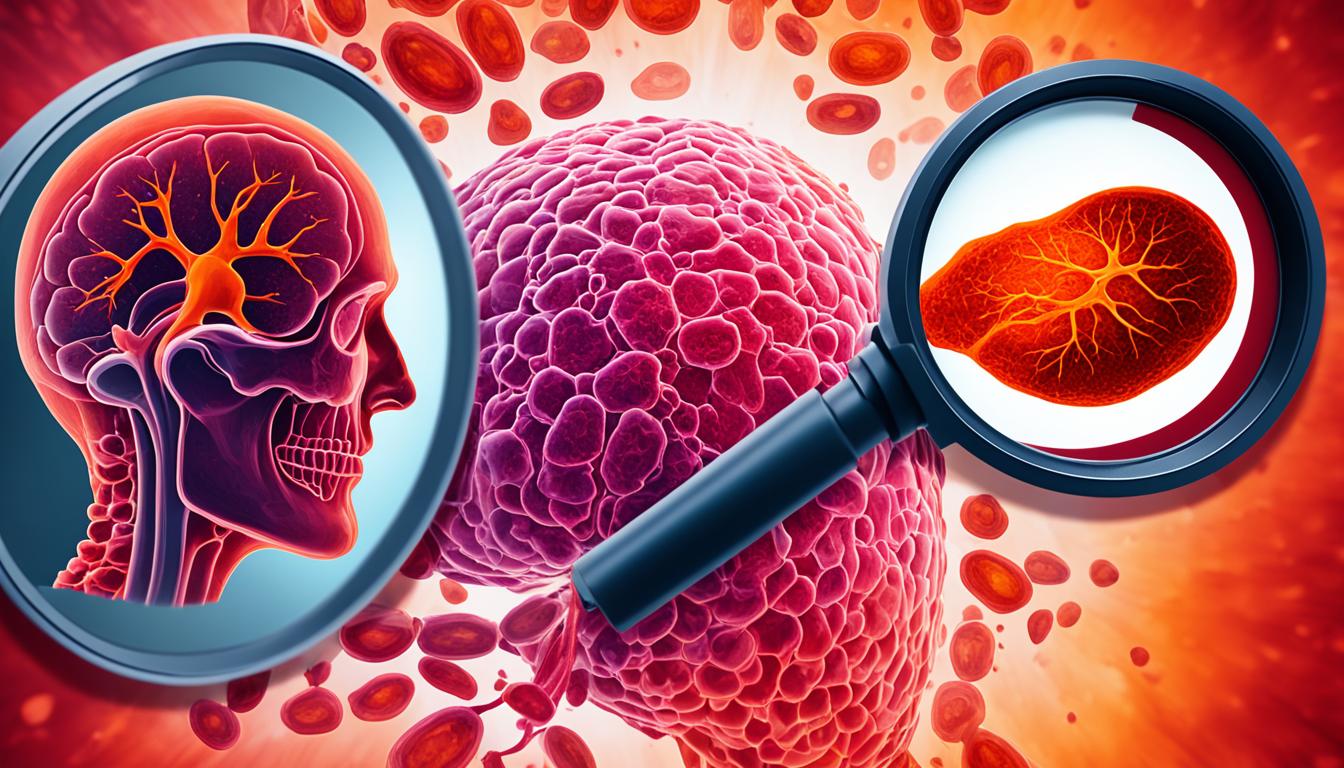Liver cancer is a dangerous illness that starts in the liver, an important organ. It affects the body in many ways. The most common type is hepatocellular carcinoma (HCC). It often comes from hepatitis B and C, liver cirrhosis, and excessive drinking. Others, like intrahepatic cholangiocarcinoma or liver metastases, also happen.
Early signs of liver cancer are abdominal ache, a big belly, and yellow skin (jaundice). You might feel weak, sick, lose weight, or not want to eat. Doctors use many tests to find it, like blood tests and scans. Sometimes, they need a liver biopsy, a small sample of liver tissue.
Treatments for liver cancer change with its type and stage. Options include surgery, chemo, and radiation. A liver transplant is also possible. Scientists are studying how stem cell therapy might help.
Finding liver cancer early is key. You can lower your risk by not drinking too much, being careful with sex, and getting the HBV vaccine.
Key Takeaways:
- Liver cancer starts in the liver and is often caused by hepatitis or overdrinking.
- To prevent it, get the HBV vaccine, limit alcohol, and have safe sex.
- Common signs are stomach pain, a big belly, yellow skin, and feeling tired.
- To diagnose it, doctors use blood tests, scans, and sometimes a liver biopsy.
- Treatments vary but may include surgery, chemo, and even a liver transplant.
- Researchers are looking into using stem cells to treat liver cancer.
Types of Liver Cancer and Risk Factors
Liver cancer comes in different types. The main one is hepatocellular carcinoma (HCC). This type starts from the liver cells. Another is bile duct cancer. It starts from the bile duct lining cells. Rare types are angiosarcoma and hemangiosarcoma. These start in the liver’s blood vessel lining cells. Liver metastases is when cancer from elsewhere spreads to the liver.
The risk factors for liver cancer are:
- Hepatitis B and C infections can cause liver damage, raising cancer risk.
- Liver cirrhosis from long-term liver damage or scarring increases risk.
- Drinking too much alcohol damages the liver, making cancer more likely.
- NAFLD, from fat buildup in the liver, can cause cancer over time.
Having these risks doesn’t always mean you’ll get liver cancer. Some get it without these risks. But, avoiding these risk factors can help prevent liver cancer.
Early Symptoms, Diagnosis, and Treatment of Liver Cancer
Finding liver cancer early is key to better results. At first, it might not show any signs. Yet, there are things to look out for. Early signs might be pain in the right upper belly. Feeling an enlarged liver there could also be a sign. Swollen belly, yellow skin, eyes, and ongoing tiredness are signs too.
Other signs early on could be feeling sick, stool color change, dropping weight, and not feeling hungry. Liver cancer can show signs that don’t seem like they’re from the liver. This is called paraneoplastic syndrome. It can cause high calcium, low sugar, and skin changes. If you notice any of these signs, see a doctor for a checkup.
Diagnosing liver cancer involves blood tests, imaging like ultrasound and MRI, and maybe a liver biopsy. These checks help find tumors, see cancer’s stage, and plan treatment right. Treatment depends on cancer type and stage. It might involve surgery, chemo, radiation, or a liver transplant. Talking with a cancer specialist is crucial. They decide the best treatment for you.

